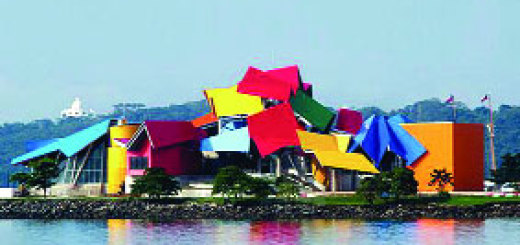Beautiful Brutalist Buildings
The architecture of building has really surpassed common men’s imagination. The engineers and architects are sometimes now making things as weird as possible. But there are several quite old structures across the globe, which are still on work, will remind you of the rough and tough mentality of the people of that time. Let’s have a look at some of those structures.
Basel College of Art and Design Basel, Switzerland
Brutalism has become something of a catch-all term for highly expressive concrete architecture dating from the mid-1950s. Quite how brutal this Swiss art and design college is, is open to question. Its architect, Hermann Baur [1894-1980], called it “poetically utilitarian”. Comprising a cluster of four buildings around a courtyard centred on a Hans Arp sculpture, the highlight is undoubtedly the college gym. Its folded roof and walls – concrete origami – form an elegant hall, used today as a lecture room and art students’ studio. One wall is a floor-to-ceiling window: the play of light on concrete is quite beautiful.
Tower House, Shibuya-ku, Tokyo, Japan
Rugged and idiosyncratic, this six-storey house rises from a tiny plot of land measuring just 20 sq m (215 sq ft). Built as a family home by the architect Takamitsu Azuma, today it is dwarfed by later buildings. Despite a floor area of just 65 sq m (700 sq ft), it boasts a roof terrace and car port as well as a generous sense of space in a sequence of open and well-lit raw concrete rooms unfolding from an exposed concrete stair. Azuma describes the Tower House as a “continual vertical room”. This is Brutalism realised with the economy of a Japanese haiku.
Orange County Offices and Court House, Goshen, New York, US
In 2015, this critically acclaimed complex was demolished in an act of civic vandalism. Comprising three concrete pavilions, with projecting bays, around a courtyard, it offered a rich variety of imaginatively lit and free-flowing spaces. Designed by Paul Rudolph, former chair of Yale University’s Department of Architecture, whose alumni included Norman Foster and Richard Rogers, it needed remedial work even before, in 2011, it was damaged by Hurricane Irene. Despite an offer by the New York architect Gene Kaufman to buy and restore it as an art space, Orange County had more brutal designs on this memorable public building.
Trellick Tower, London, England, UK
This defiant and distinctive 31-storey local authority tower block was the defining work of Ernö Goldfinger, a Hungarian émigré who lent his name, and daunting character, to a famous James Bond villain. The building’s 217 generously planned flats are detached from a striking lift and service tower, connected to it on every third floor by vertiginous sky bridges. Sinking early on into social decline, from the late 1980s Trellick Tower became fashionable among young architects, designers and writers who saw in it a sublime grandeur rather than concrete horror. In 1998, with Brutalism fashionable again, Trellick Tower was listed.
Centro de Exposições, Salvador, Bahía, Brazil
This astonishing exhibition hall is suspended five metres above ground, its rough surfaced concrete body supported by steel struts held in tension by a pair of slim masts housing a lift and stairs. An amphitheatre in the guise of an inverted pyramid below one end of the suspended hall is balanced ? visually and physically ??? by a sky-lit, pyramid gallery above the opposite end. While it seems odd to find such a Brutal design in a tropical climate, its concrete shell protects exhibits and visitors from heat and glare. It was designed by the inventive Brazilian architect João Filgueiras Lima.
Ministry of Highway Construction, Tbilisi, Georgia
More Constructivist than Brutalist, this tour-de-force is by George Chakhava who, as deputy minister of the Georgia Ministry of Road Construction, was both client and architect. Although influenced by Russian Revolutionary architects of the 1920s, Chakhava says that the building’s monumental interlocking structural grid is rooted in nature. His aim was to occupy as little ground space as possible with the various floors of the building opening out like branches from the central root of a tree. Whatever his reasoning, this is a truly spectacular design. Restored, from 2007 it has been the headquarters of The Bank of Georgia.
Jenaro Valverde Marín Building, CCSS, San José, Costa Rica
Set between the Pacific Ocean and the Caribbean, Costa Rica might seem like the last country anyone would expect to find Brutalist architecture. Pre-fabricated concrete construction, however, allowed Central and South American architects to launch into the Modern world at low cost and on a grand scale. From the 1940s, Oscar Niemeyer, had paved the way in Brazil. Although simple in plan and section, this social security administration building by the Nicaraguan born architect Alberto Linner Díaz has the look of a bold and complex concrete sculpture, its powerful character offset by colourful plants and swaying palms.
Embassy of Russia, Havana, Cuba
Once a symbol of Soviet domination, the high and mighty Russian Embassy soars above the treeline of Havana’s Fifth Avenue like some vast concrete sword plunged firmly into the Cuban soil. The Soviet Union collapsed soon after the completion of this towering concrete complex. Its architect was Aleksandr Rochegov, also known for the design of the Leningradskaya Hotel, Moscow. Housed in one of Stalin’s operatic Seven Sister skyscrapers and dating from 1954, it is owned today by the US Hilton chain. Determinedly Russian, the Havana embassy lurks, as best it can, behind a severe wall of barbed wire and jagged glass.
Hemeroscopium House, Madrid, Spain
This bravura house gives the illusion of a huge weight of concrete supported by nothing more than a sheer glass wall. It is the home of Antón García-Abril and Débora Mesa, principals of the architecture practice Ensamble Studio, who say that engineering took a year, while the pre-fabricated structure was erected in just seven days. One of the projecting beams is a swimming pool: quite clearly it has taken considerable reinforcing to make the concrete elements of the house do the architects’ bidding. But, as Mesa says, as if she was talking about Brutalism itself, this is “Architecture out of the comfort zone.”
Boston City Hall, Boston, Massachusetts, USA
Almost 50 years old, this daunting civic building is as controversial as ever. In 2013, The Boston Globe said, “City Hall is so ugly that its insane upside-down wedding-cake columns and windswept plaza distract from the building’s true offense. Its great crime isn’t being ugly; it’s being anti-urban.” According to Gerhard Kallmann, the City Hall’s co-designer, “It had to be awesome, not just pleasant and slick”, reminding “you of ancient memories, history”. Kallmann and his partner Michael McKinnell were thinking of an updated ancient classical monument seen through the lens of Le Corbusier and tens of thousands of concrete slabs.















Recent Comments